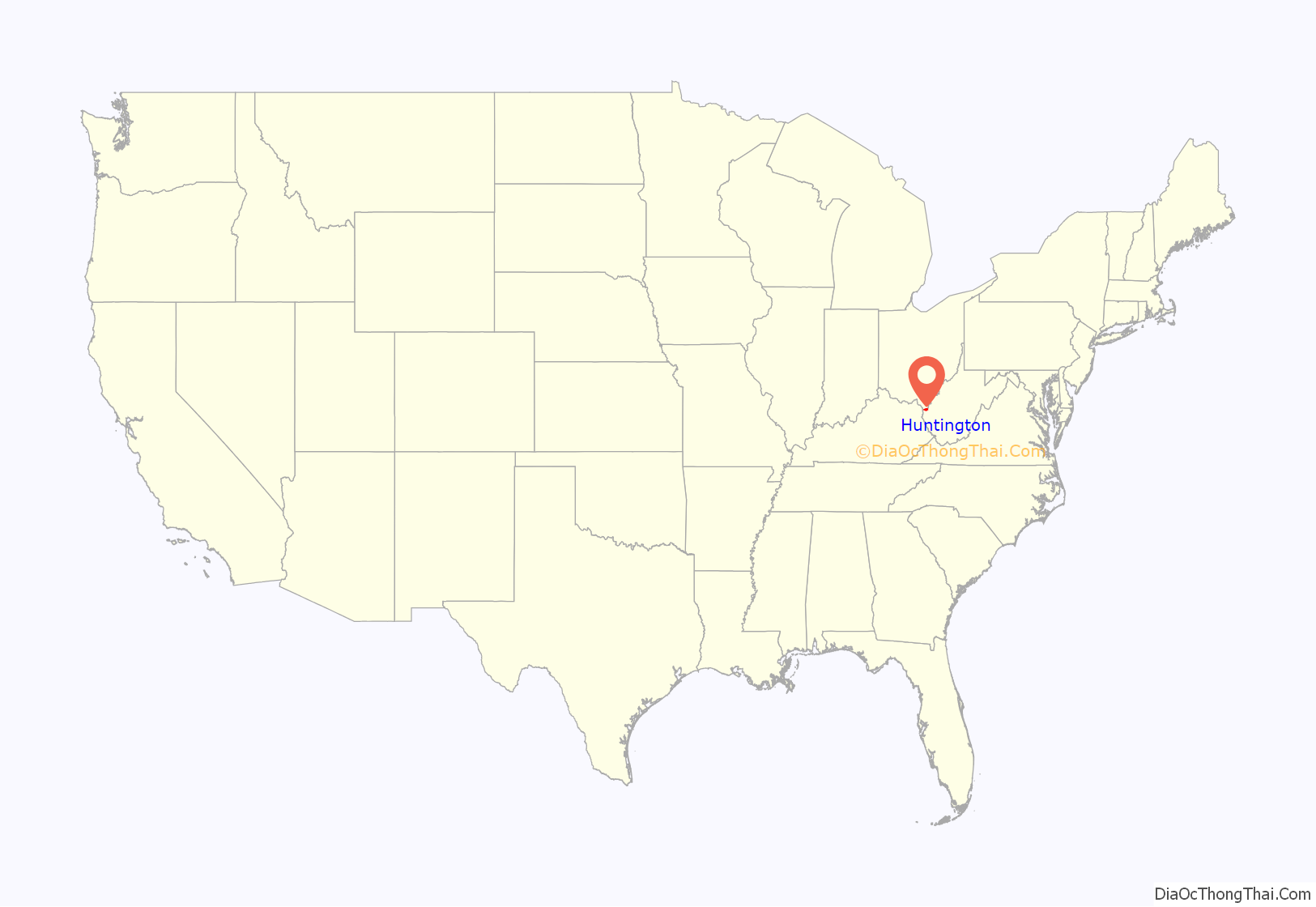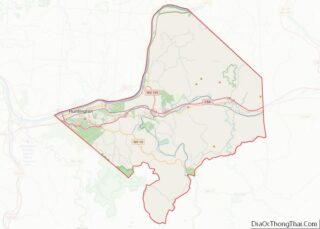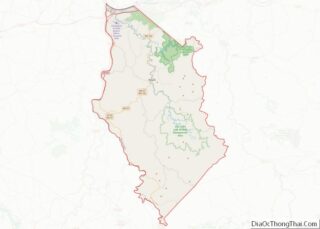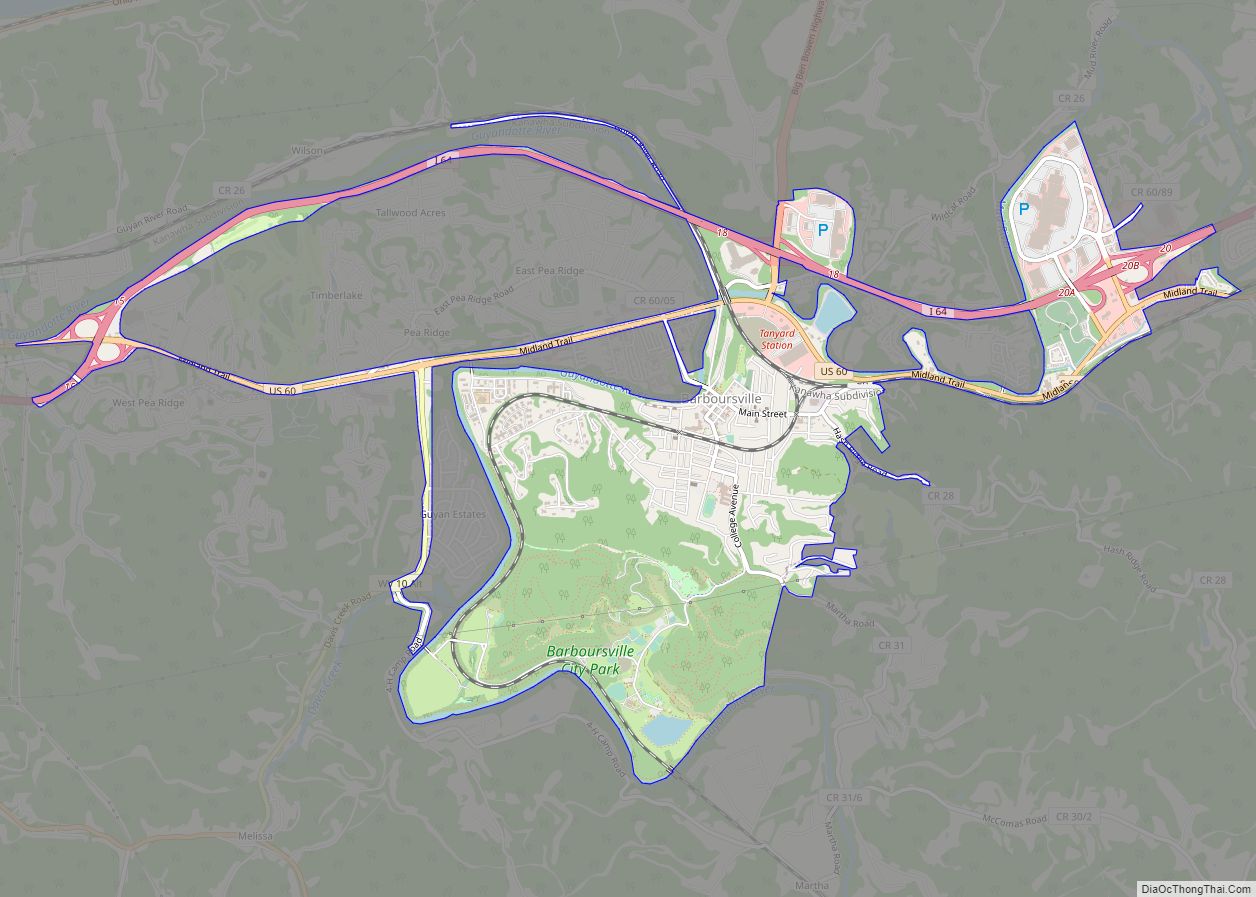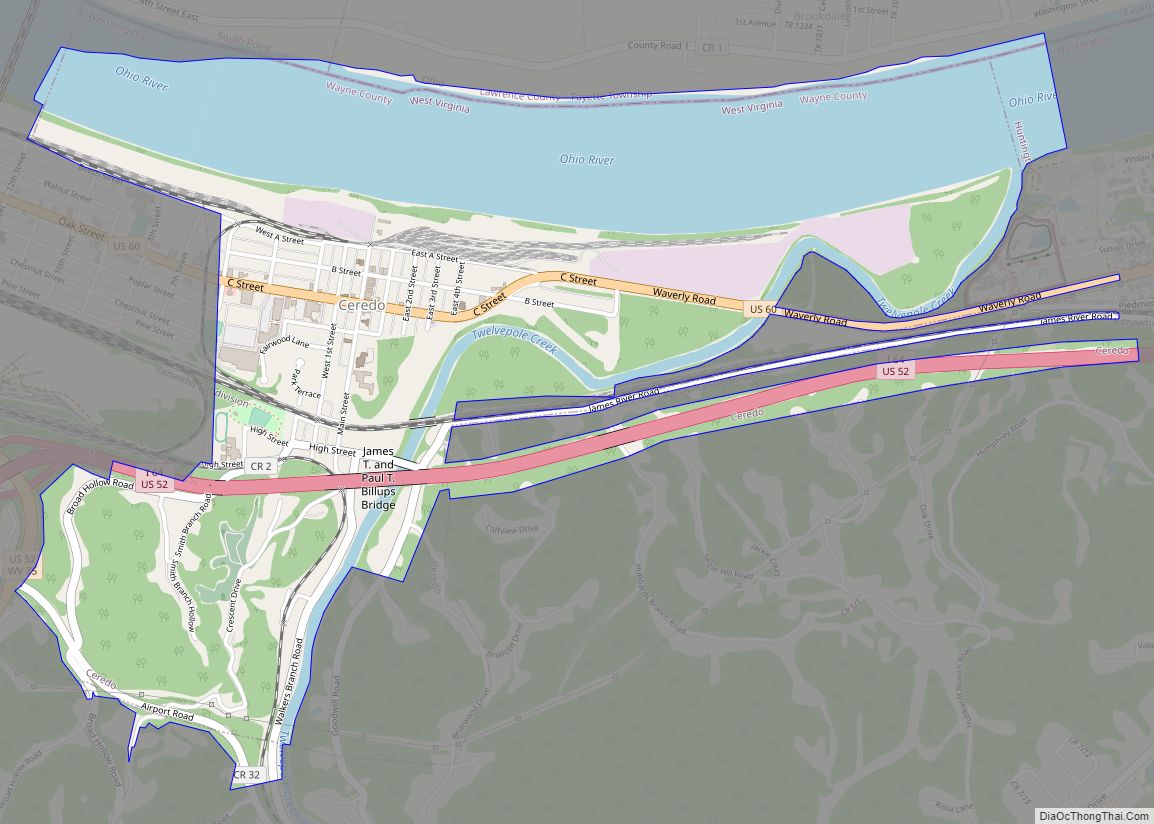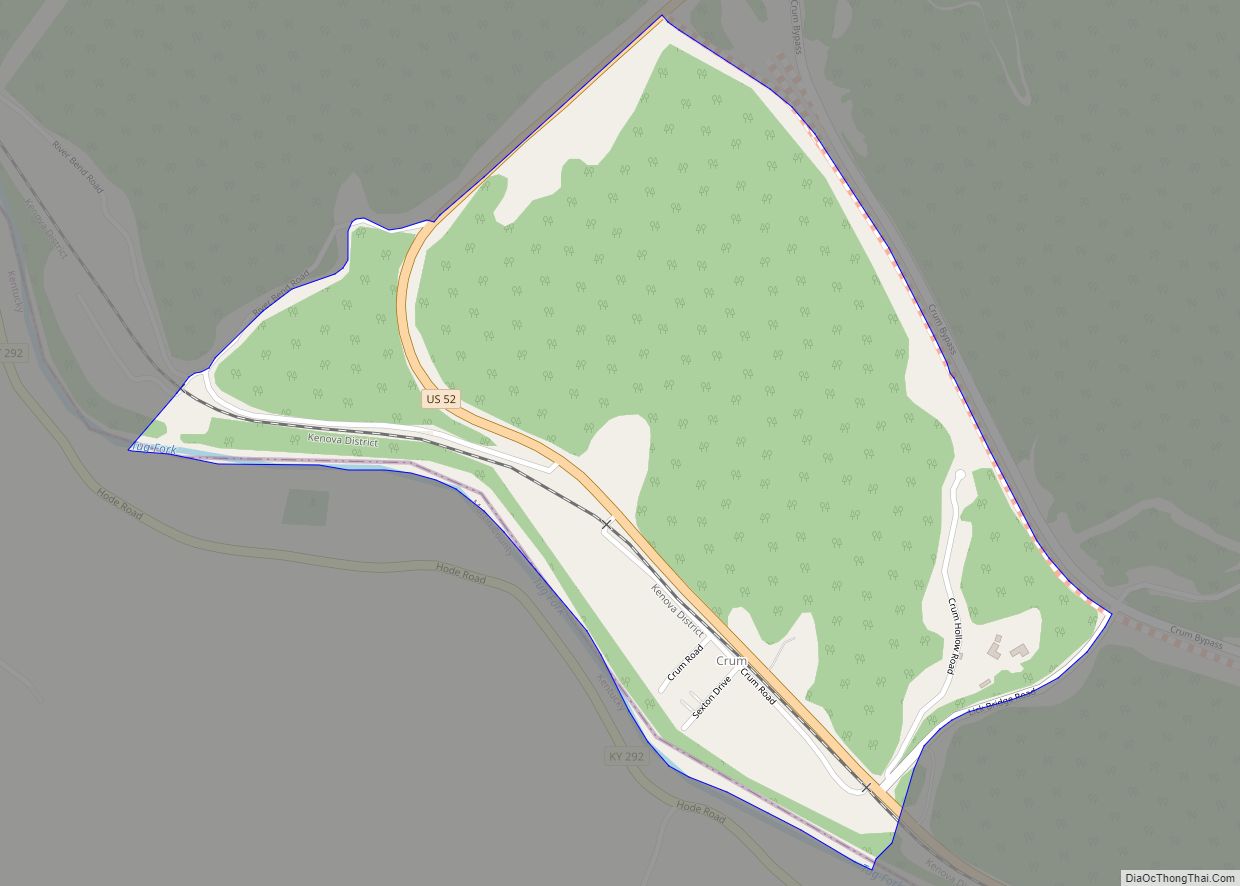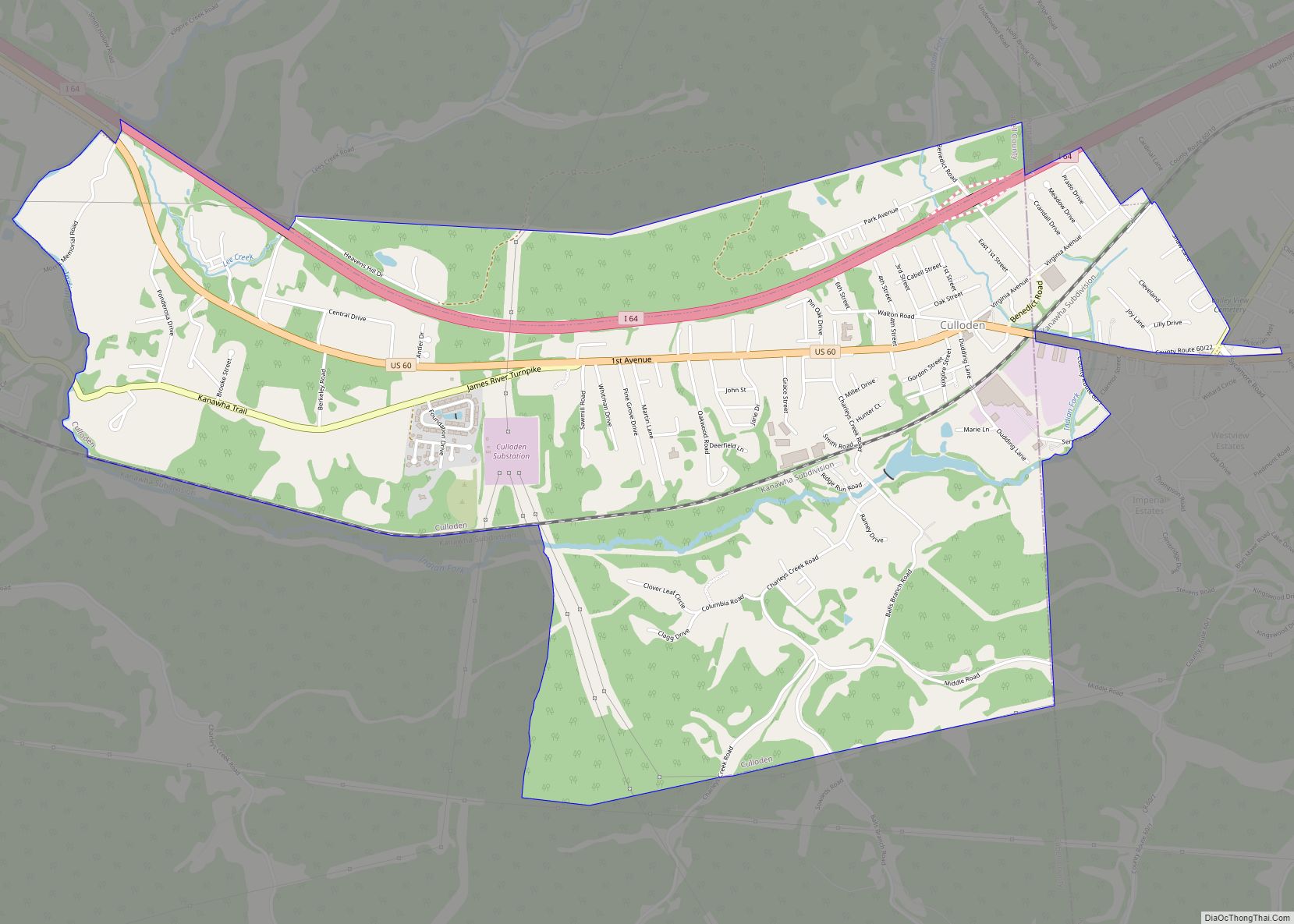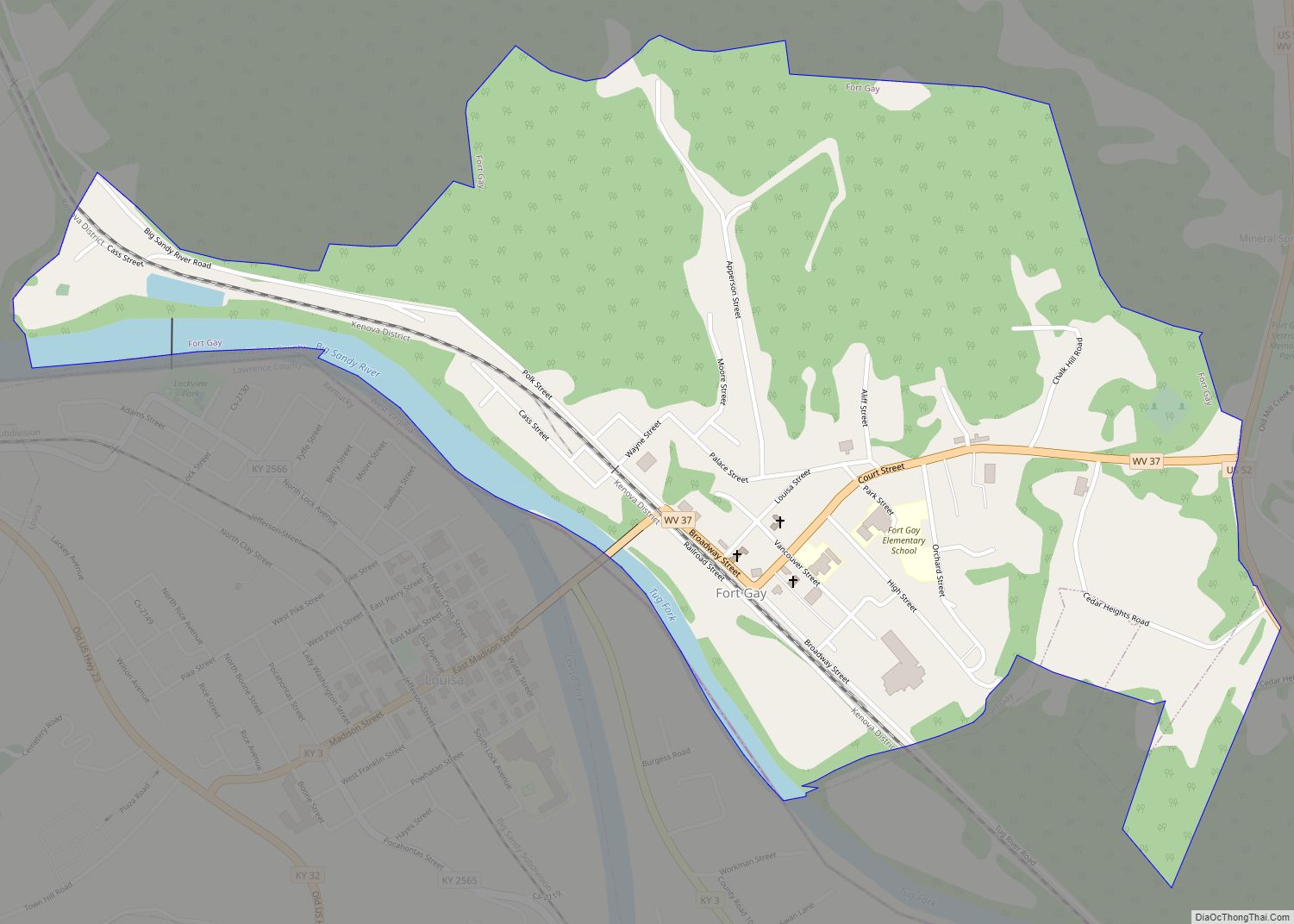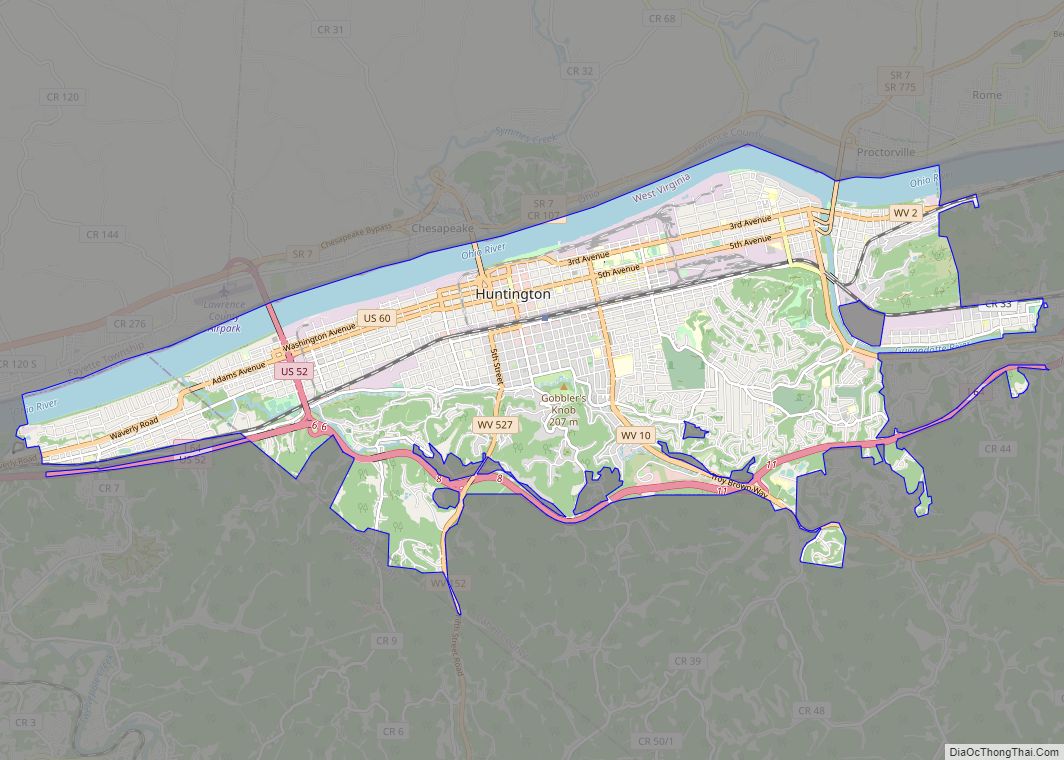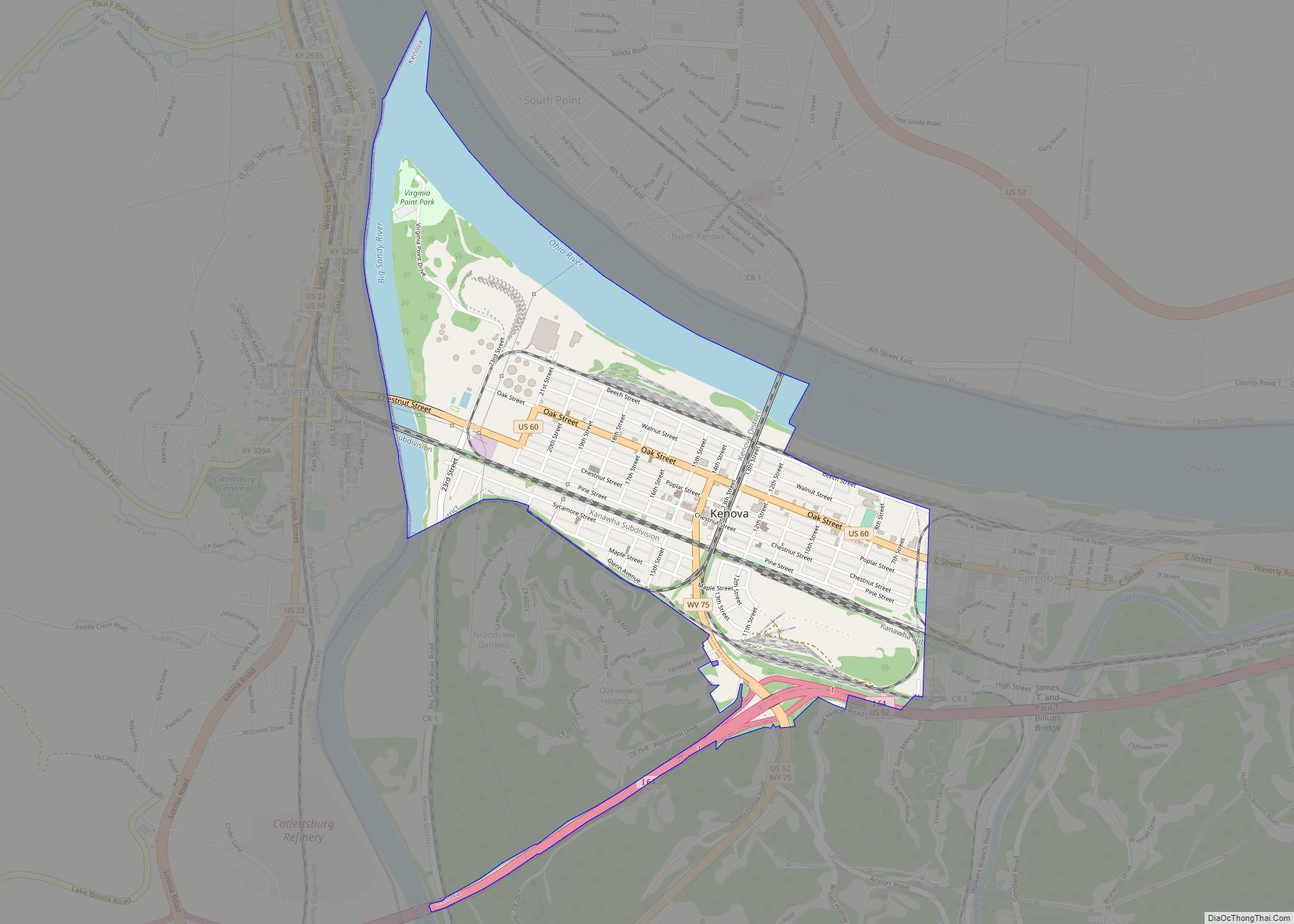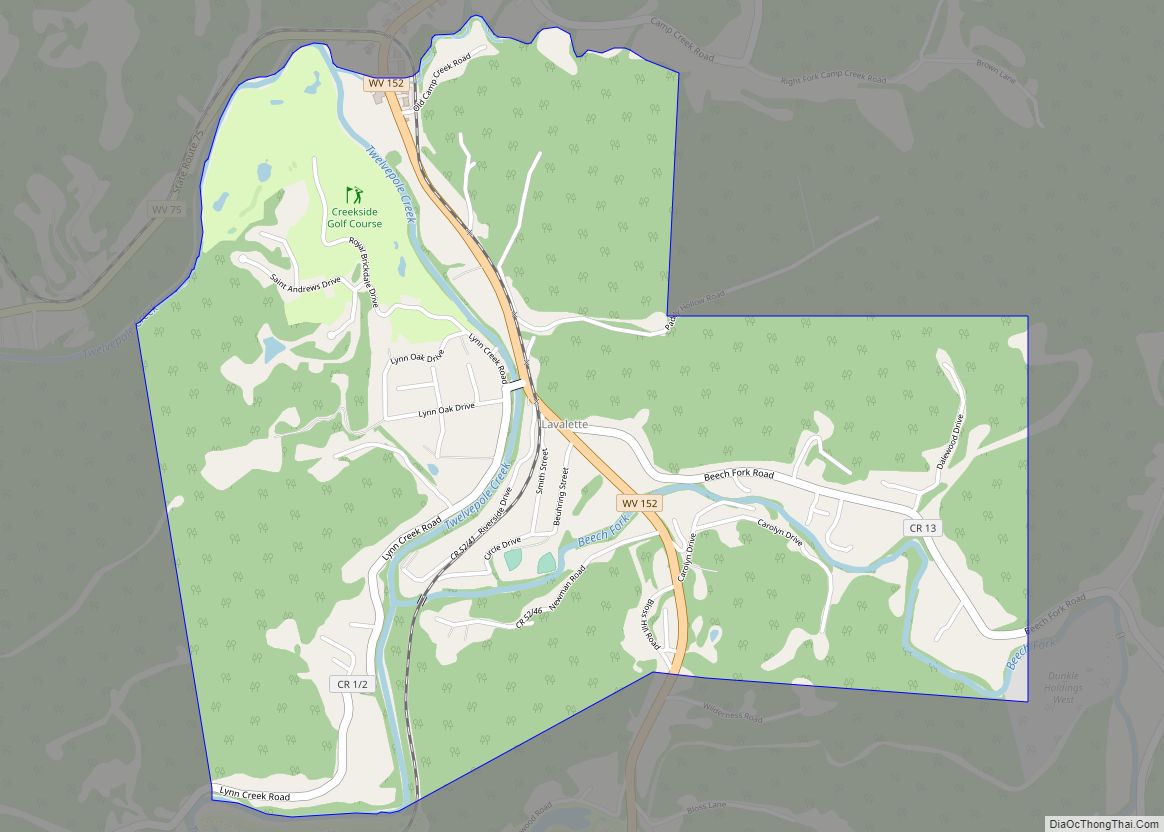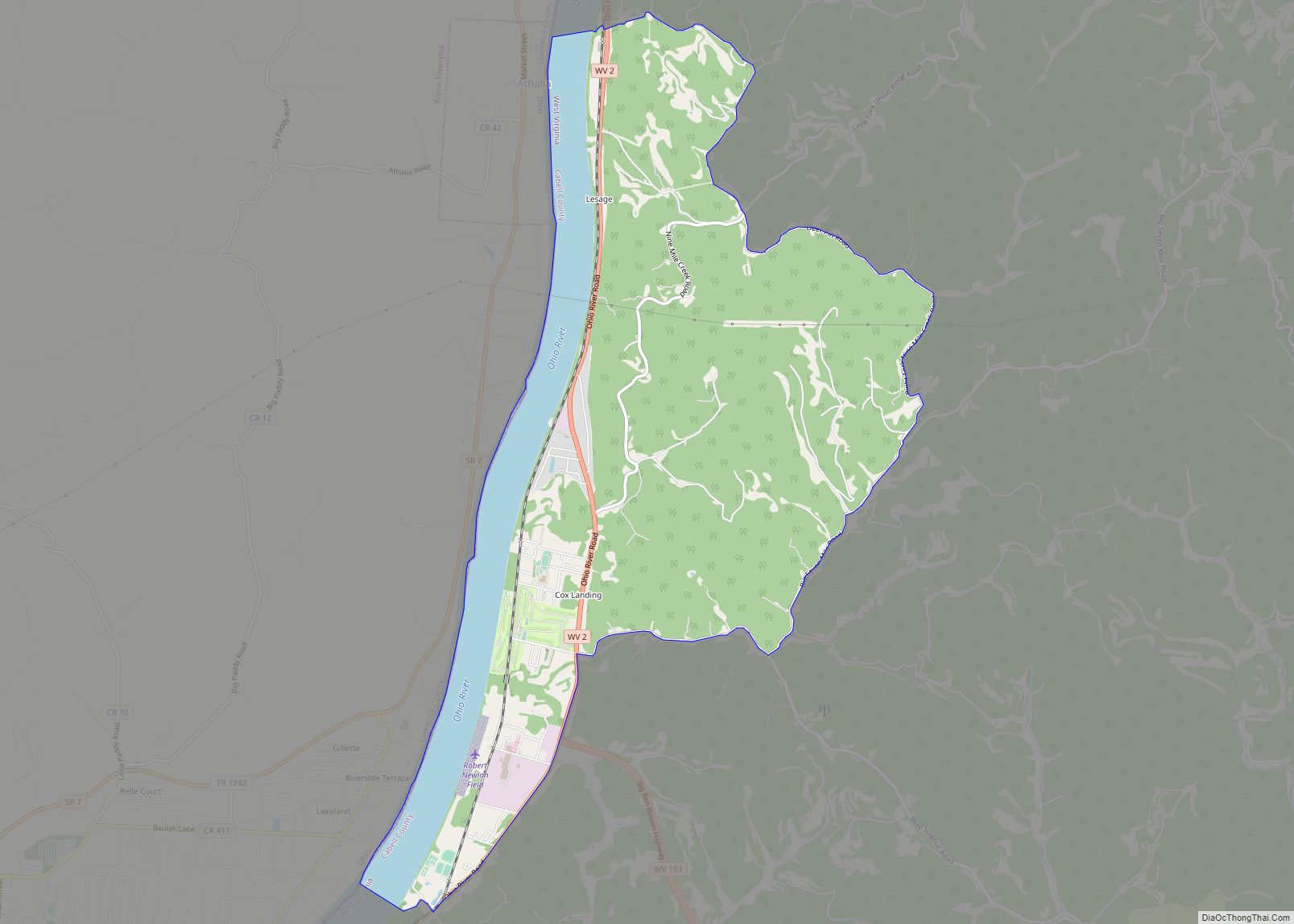Huntington is a city in Cabell and Wayne counties in the U.S. state of West Virginia. The county seat of Cabell County, the city is located at the confluence of the Ohio and Guyandotte rivers. Huntington is the second-largest city in West Virginia, with a population of 46,842 as of the 2020 census. Its metro area, the Huntington–Ashland metropolitan area, is the largest in West Virginia, spanning seven counties across three states and having a population of 359,862 at the 2020 census. Both the city and metropolitan area declined in population from the 2010 census, a trend that has been ongoing for six decades. It is home to the Port of Huntington Tri-State, the second-busiest inland port in the United States.
Surrounded by extensive natural resources, the industrial sector is based in coal, oil, chemicals and steel, all of which support Huntington’s diversified economy. The city is a vital rail-to-river transfer point for the marine transportation industry. Also, it is considered a scenic locale in the western foothills of the Appalachian Mountains. Its location was selected as ideal for the western terminus of the Chesapeake and Ohio Railway, the predecessor of what would become CSX Transportation which still operates CSX Transportation-Huntington Division in the city to date. The railroad founded Huntington as one of the nation’s first planned communities to facilitate the railroad and other transportation-related industries at the railway’s western terminus. The site, previously a collection of agricultural homesteads, developed fast after the railroad’s completion in 1871 and is eponymously named for the railroad company’s founder, Collis Potter Huntington. The first identifiable permanent settlement, Holderby’s Landing, was founded in 1775 in the Colony of Virginia. With the exception of the neighborhoods of Westmoreland and Spring Valley, most of the city is in Cabell County.
The city is the home of Marshall University as well as the Huntington Museum of Art; the Mountain Health Arena; the U.S. Army Corps of Engineers (Huntington District); the Collis P. Huntington Historical Society and Railroad Museum; Camden Park, one of the world’s oldest amusement parks; the headquarters of the CSX Transportation-Huntington Division, the largest division in the CSX network; the Special Metals Plant; and the Port of Huntington Tri-State, the largest river port in the United States. The largest employers are Marshall University, Cabell Huntington Hospital, St. Mary’s Medical Center, CSX Transportation, the U.S. Army Corps of Engineers, Amazon, DirecTV, and the City of Huntington.
| Name: | Huntington city |
|---|---|
| LSAD Code: | 25 |
| LSAD Description: | city (suffix) |
| State: | West Virginia |
| County: | Cabell County, Wayne County |
| Incorporated: | 1799 (Guyandotte) |
| Elevation: | 564 ft (172 m) |
| Land Area: | 16.22 sq mi (42.01 km²) |
| Water Area: | 2.24 sq mi (5.81 km²) |
| Population Density: | 2,888.1/sq mi (1,115.1/km²) |
| Area code: | 304 & 681 |
| FIPS code: | 5439460 |
| GNISfeature ID: | 1540605 |
| Website: | cityofhuntington.com |
Online Interactive Map
Click on ![]() to view map in "full screen" mode.
to view map in "full screen" mode.
Huntington location map. Where is Huntington city?
History
The first permanent settlement in modern-day Huntington was founded in 1775 as “Holderby’s Landing.” The modern City of Huntington was founded by Collis P. Huntington and Delos W. Emmons as the western terminus for the Chesapeake and Ohio Railway (C&O) on a tract of land west of the mouth of the Guyandotte River, between the Ohio River and Twelve Pole Creek. Collis P. Huntington was one of the “Big Four” of western railroading who built the Central Pacific Railroad as part of the first U.S. transcontinental railroad (along with Leland Stanford, Mark Hopkins, and Charles Crocker).
Huntington was created as a hub for the C&O, which, once completed in 1873, fulfilled a long-held dream of the Virginias to have a rail link from the James River at Richmond, Virginia to the Ohio River Valley. The new railroad facilities adjacent to the Ohio River resulted in expansion of the former small town of Guyandotte into part of a large new city called Huntington. The C&O Railroad expanded east to Newport News (and coal piers), and west to eventually reach Cincinnati and Chicago in later years. After merging with several other railroads, C&O is now known as CSX Transportation.
The city was incorporated in 1871 just west of the earlier city of Guyandotte. Guyandotte, which became a neighborhood of Huntington in 1891, was founded in 1799 on land that was originally part of the 28,628-acre (115.85 km) French and Indian War veteran’s Savage Grant. Meriwether Lewis passed the Guyandotte and Big Sandy River peninsula on or about September 20, 1803, on his way down the Ohio River before meeting up with William Clark in Clarksville, Ind.
Huntington was the second American city to feature electric streetcars in the early years (after San Francisco), until they were gradually replaced with gasoline-powered buses. Some of the old trolley tracks can still be seen. Camden Park, which at 110 years old is one of the world’s oldest amusement parks, was built in 1903 to encourage ridership on the trolleys (then owned by the Camden Interstate Railway Company).
Huntington’s “boom” period occurred from the founding in 1871 until the Great Flood of 1937, which claimed 5 lives, caused millions of dollars in damage, left tens of thousands homeless, and led to the creation of Huntington’s flood walls in 1938. Of the 40,000 people living in the flooded areas of Huntington, 25,000 were made refugees as fresh water and fuel was scarce. 11,000 people applied for Red Cross aid during the flood and the relief period.
World War II brought another economic boom, but that was short-lived and ended along with the war in the 1940s. Huntington’s population began to drop after 1950 because of urban sprawl and the decline of the steel and manufacturing industries. In the 1970s, federal urban renewal programs destroyed several parts of downtown. The industrial base continued to expand through the 1970s, but beginning in the early 1980s the steel and manufacturing industry in the region imploded, with massive layoffs and mill and plant closures.
A shift to the city’s economic base began in the late 1980s to focus more on education, tourism, and services, based mainly on healthcare/medicine and biotechnology. Although Huntington successfully shifted the focus of its economy, the population has never rebounded to its industrial-era highs. While 86,353 people lived in the city proper in 1950, a combination of suburbanization and economic turbulence caused a sharp decrease in population to just 51,475 in 2000.
21st century
Huntington has seen a major revival since the opening of the Pullman Square Town Center on the vacant lot formerly known as the “Superblock” in 2005, the filming of the Warner Bros. motion picture We Are Marshall in 2006, and the filming of ABC’s Food Revolution in 2010. The modern Huntington Metro Area spans 7 counties across 3 states and is the largest in West Virginia with a population of more than 360,000. The largest employers are Marshall University, Cabell Huntington Hospital, St. Mary’s Medical Center, Amazon, DirecTV, and the City of Huntington.
Shortly after Pullman Square was constructed, the city began work on upgrading the streetscape on Fourth Avenue and Ninth Street. Ninth Street was formerly known as the Ninth Street Plaza and was closed to vehicle traffic for many years. Once anchored by Pullman Square on the north end, the old plaza was removed in 2006 and Ninth Street has once again become attractive to businesses. Fourth Avenue, known as the “Old Main Corridor”, has been upgraded with new lighting, artistic and pedestrian-friendly design concepts, and bicycle lanes.
Efforts to redevelop Huntington started with the construction of the $10.5 million Huntington Civic Arena, which was the largest arena in the state when it opened in 1977. The 25-year delay in construction of what became Pullman Square caused the building to become a money losing effort for the city and is now managed privately by SMG. After renovation in 1997, and 2010, the arena has now been included in Billboard‘s “New or Renovated Venues to Watch” list for 2013. Huntington’s arena landed at No. 14 in a list of 17 venues across the globe. The exterior was also renovated in 2020–2021.
The culinary scene in the city has enjoyed a renaissance in the city since the early 2000s. Notable local restaurants include Fat Patty’s, Jim’s Spaghetti and Steak House, Backyard Pizza, Black Sheep Burrito and Brews, Navarino Bay, and Le Bistro.
The Huntington Mall, the largest mall in the state, opened a few years after the Arena in 1981. When the mall was built, the only other businesses around it were two bars and an Exxon gas station. Since the mall’s opening, several retailers have built around the mall, including four hotels and several restaurants, as well as a Walmart Supercenter, the first Best Buy in West Virginia, and the first Sheetz gas station/convenience store in southern West Virginia. The Huntington Mall has a yearly economic impact of close to $400 million.
The Shops at Heritage Station are in the old Baltimore and Ohio Railroad Depot, originally constructed in 1887. The complex includes an original steam engine with a “Pullman” train car, and a building that used to house one of Huntington’s first banks—which was the easternmost bank robbed by the James-Younger Gang. That structure is currently occupied by a specialty beer and cheese shop. Heritage Station was turned into a shopping center called “Heritage Village” during the dark days of Urban Renewal in the 1970s. For decades, the station sat hidden and virtually unused just two blocks from the city center, until Create Huntington got involved in 2006. Today, Heritage Station is an artisan retail complex, with locally owned shops, and home to public events like the annual Diamond Teeth Mary Blues Festival, named for the blues singer born in the town.
In 2017, Huntington joined a host of other municipalities and local governments in the area suing eight pharmaceutical companies, claiming their products harmed Huntington’s welfare, leading to a drug crisis in the city and surrounding county. Included in the lawsuits are companies like McKesson Corp., Cardinal Health and AmerisourceBergen Drug Corp, among others.
Huntington Road Map
Huntington city Satellite Map
Geography
Huntington is in the southwestern corner of West Virginia, on the border with Ohio, on the southern bank of the Ohio River, at the confluence with the Guyandotte River. The city lies within the ecoregion of the Western Allegheny Plateau. Most of the city is in Cabell County, for which it is the county seat. A portion of the city, mainly the neighborhood of Westmoreland, is in Wayne County. Huntington is commonly divided into four main sections. The north–south divider is the CSX railroad tracks, while the east/west divider is First Street. Residents of Huntington are called “Huntingtonians.”
According to the United States Census Bureau, the city has a total area of 18.46 square miles (47.81 km), of which 16.22 square miles (42.01 km) is land and 2.24 square miles (5.80 km) is water. The Guyandotte River joins the Ohio River about 5 miles (8.0 km) east of downtown. Huntington fills the roughly three-mile wide flood plain of the south bank of the Ohio River for eighty square blocks and portions of the hills to the immediate south and southeast.
Climate
Because of its position in the westernmost and lowest area of the state, the city is on the northern limits of a humid subtropical climate (Köppen Cfa), unlike the “highlands” of West Virginia, which are in the Allegheny Mountains and the Appalachian Mountains. This location gives the city an even four seasons, with each season beginning around the calendar date. Huntington is made humid by the Ohio River, but summers are not as hot as they are further south and west. Snowfall generally falls in moderate amounts, accumulating an average 23 inches (58 cm) seasonally, and the greatest 24-hour fall was 21.1 inches (54 cm) during the March 1993 Storm of the Century. Each year on average, 24 days reach 90 °F (32.2 °C) and 16–17 days stay below freezing. The highest recorded temperature was 108 °F (42 °C) on July 28, 1930, and the lowest was −24 °F (−31 °C) on February 9, 1899.
See also
Map of West Virginia State and its subdivision:- Barbour
- Berkeley
- Boone
- Braxton
- Brooke
- Cabell
- Calhoun
- Clay
- Doddridge
- Fayette
- Gilmer
- Grant
- Greenbrier
- Hampshire
- Hancock
- Hardy
- Harrison
- Jackson
- Jefferson
- Kanawha
- Lewis
- Lincoln
- Logan
- Marion
- Marshall
- Mason
- McDowell
- Mercer
- Mineral
- Mingo
- Monongalia
- Monroe
- Morgan
- Nicholas
- Ohio
- Pendleton
- Pleasants
- Pocahontas
- Preston
- Putnam
- Raleigh
- Randolph
- Ritchie
- Roane
- Summers
- Taylor
- Tucker
- Tyler
- Upshur
- Wayne
- Webster
- Wetzel
- Wirt
- Wood
- Wyoming
- Alabama
- Alaska
- Arizona
- Arkansas
- California
- Colorado
- Connecticut
- Delaware
- District of Columbia
- Florida
- Georgia
- Hawaii
- Idaho
- Illinois
- Indiana
- Iowa
- Kansas
- Kentucky
- Louisiana
- Maine
- Maryland
- Massachusetts
- Michigan
- Minnesota
- Mississippi
- Missouri
- Montana
- Nebraska
- Nevada
- New Hampshire
- New Jersey
- New Mexico
- New York
- North Carolina
- North Dakota
- Ohio
- Oklahoma
- Oregon
- Pennsylvania
- Rhode Island
- South Carolina
- South Dakota
- Tennessee
- Texas
- Utah
- Vermont
- Virginia
- Washington
- West Virginia
- Wisconsin
- Wyoming
